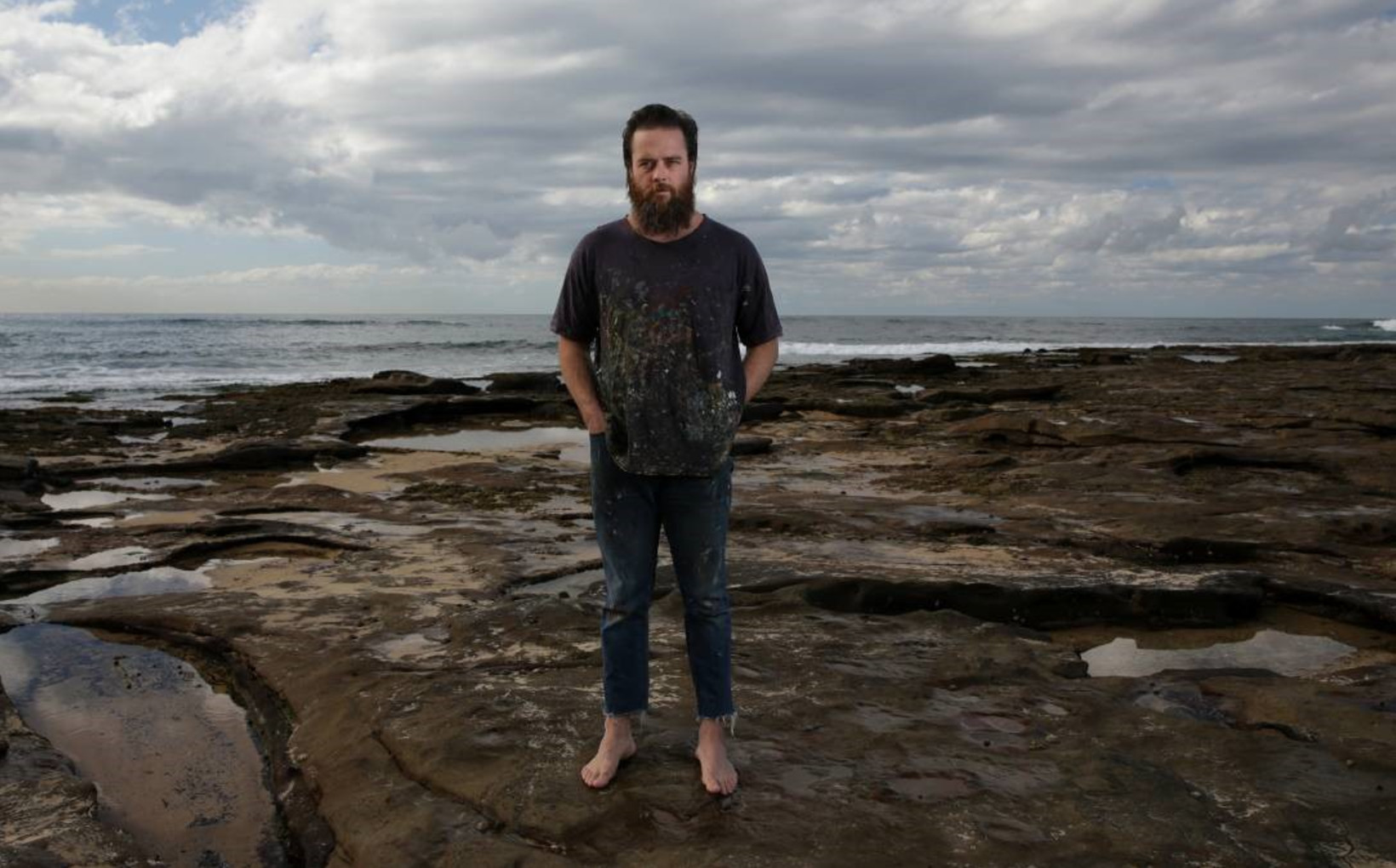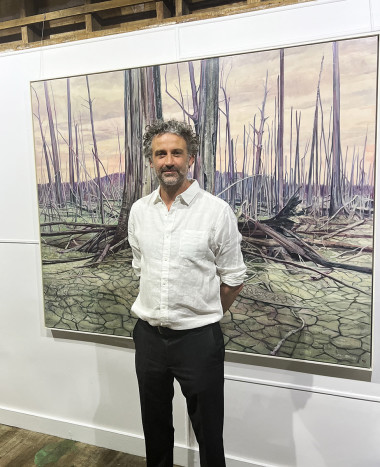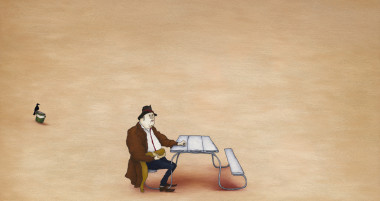Jill Stowell
Newcastle Herald
June 7, 2019
James Drinkwater is the most recent Newcastle-based artist to be given an extensive survey exhibition by the Newcastle Art Gallery. This is a remarkable privilege for an artist still in his mid-30s, since such surveys normally document an evolving career over maybe 50 years of making and exhibiting art. It might also show that the artist's freshest and most exciting work dated from the earliest exhibitions.
Will this prove the case with James Drinkwater? He has enjoyed a huge success already, with paintings in major prizes and sold-out exhibitions in rapid succession in Sydney galleries. He is painting constantly to meet the demand for new shows. It is a remarkable situation for someone so young, but it also has dangers.
Drinkwater's present vitality shows no signs of disappearing. Patches of pigment overlap and succeed one another in visible rush and verve. Sometimes the results are almost chaotic. Speed wins over surface. But can we see what he sees in the welter of paint? Does this matter, providing the sense of energetic emotion conveys itself?
This huge exhibition occupies the entire top floor of the gallery, but it covers only the last 10 years since the artist first committed himself as an adult to a career in painting. It documents a trajectory from a Nolanesque self-portrait in Melbourne through years spent with the great galleries of Europe to family life on the edge of the sea in Newcastle.
The foundation of the paintings is always a patchwork of colour, supported by an armature of drawing, which from time to time breaks through the layers of paint and pattern. It works at its best on large vertical canvases that often successfully incorporate frames. The same vertical impetus also informs a number of large sculptural works, fabricated from cut and welded corten steel. These, along with a large Klippelesque installation, are among the show's highlights.
The foundation of the paintings is always a patchwork of colour, supported by an armature of drawing, which from time to time breaks through the layers of paint and pattern.
The installation, with its intriguing components, highlights another feature common to many of the works, incorporating an assortment of found objects into overall compositions. A similar process occurs in a video showing the artist energetically building an assemblage in a Berlin street from nearby detritus. Memory and personal connection is never far away.
Travel destinations play a role. Berlin perhaps enhanced the sense of impetus in Drinkwater's paintings, though without the polemic savagery or neo-atavism of Baselitz or Penck. Paris, however, from a three-month residency, produced a new openness, while a visit to the south of France became a homage to Matisse. Palm trees anchor a family holiday in Tahiti.
But it is the return to living and working by the sea in Newcastle that has produced the largest body of work from a big new studio. The title of the exhibition refers to a love of the sea, but in the paintings there is no blue horizon or miniature worlds of rock pools.
Instead, a group of five major paintings from 2018, spread across the back wall of the gallery, are abstracted colourful variations on the human figure. It is instructive to have this opportunity to see them hung together, since each is now in a different private collection.
Patrons have responded to palpable energy and the romantic vehemence of implied autobiography, where artmaking is an easy dialogue between daily events and the language of painting.
It is valuable for NAG to show in Newcastle paintings invariably sold elsewhere. The artist too can realise just how prolific he has been and plot new developments.
A continuing question is whether to call these works abstract, in the way that Virginia Cuppaidge makes so cogent in her exhibition downstairs.
Direct representation is absent from Drinkwater's work, though we readily understand whether his inspiration comes from landscape, still life or the figure.
He has been a finalist five times in the Wynne Prize for landscape and been selected for the Kilgour Prize for figure painting. Will he further refine a coherent language at a time when boundaries are blurring?
I'm sad I won't be around to see his work surveyed in 2060. Where will it have gone? The urgency may have slowed. But the tight bonds between art and life will surely remain. With I hope the passion.
Image: James Drinkwater at the Cowrie Hole. Photo by Simone De Peak



